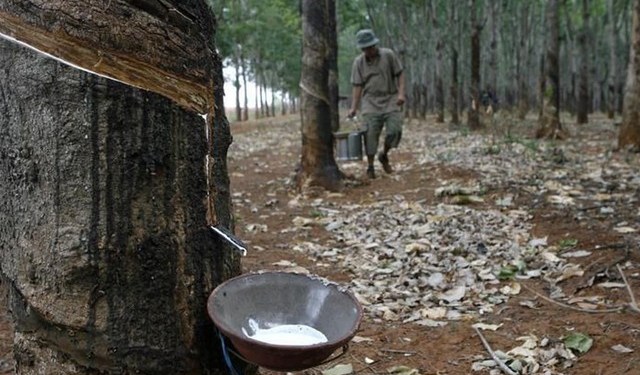The Rubber Board has set a production target of one million tonnes to meet demand. Rubber Board ChairmanAjith Kumar told Business Standard that the current demand for rubber in the country is around one million tonnes.
We want to meet the entire demand by producing locally in the next two years. Shortage in the domestic market in 2015-16 was 432,415 tonnes. Import of natural rubber increased to 458,374 tonnes in 2015-16 from 177,130 tonnes in 2009-10.
For 2016-17, the Rubber Board has set a target to grow natural production by 16 per cent to 654,000 tonnes. In 2015-16, production was down 12.5 per cent.
“We want to reverse the downward trend in production, which has been happening for the past two years,” said Kumar. The strategy is to bring more untapped areas into production, increase productivity through skill development and adopting better agriculture process. Also on the cards is adding about 10,000 hectares of new rubber cultivation every year.
Some initiatives have already started showing results, Kumar said. Since May, production has picked up by two per cent. The share of untapped areas had increased from eight per cent in 2013-14 to 30 per cent in 2015-16. The Rubber Board is making these plantations productive by grouping farmers under a ‘Tappers Bank’, which works more like a self help group model.
Each group will have 10 tappers, who will take care of individual growers. The other major advantage of this initiative is reduction in costs for the farmer.
According to Kumar, the number of tapping days will come down to one instead of seven days. The advantage for the farmer is he will pay wages for only for one day instead of seven days.
Besides, the plants will also have better life.
The Rubber Board has launched this on a pilot basis and 60 rubber-producing societies have been identified. In July and August, untapped areas reduced by around five per cent to 25 per cent of the total production area.
Prices have dropped to Rs 138.50 a kg for RSS-4 variety of rubber in the domestic market from Rs 208.05 a kg in 2011-12. The government of Kerala, the major rubber-growing state in the country, has introduced a subsidy scheme to guarantee a minimum price of Rs 150 a kg for rubber farmers.
Kumar also believes that by upgrading workers’ skills, production can go up by 25 per cent. Yield declined from 1,629 kg a hectare in 2013-14 to 1,437 kg a hectare in 2015-16. The Rubber Boardexpects this to increase to 1,500 kg per hectare in FY17.
Around 30,000 people will be trained in Kerala and Tripura, which have agreed to sponsor the project.
“If productivity can be improved to 1,600 kg per hectare, we can produce around 900,000 tonnes. Duty-free imports would be around 100,000 tonnes. Both add up to one million tonnes, which is the total demand in the country,” said Kumar.
The Board has also identified around 50,000 hectares in Assam and another 75,000 hectares inTripura for starting fresh cultivation.




























